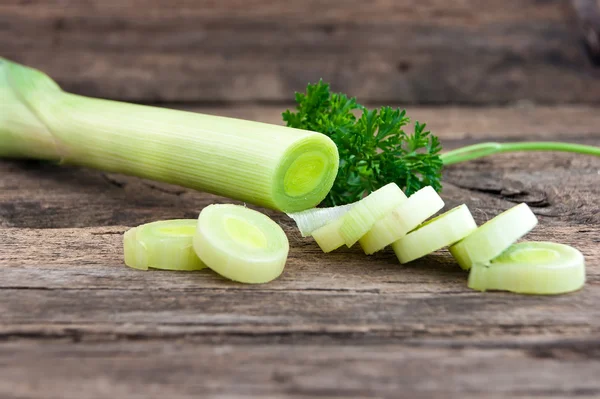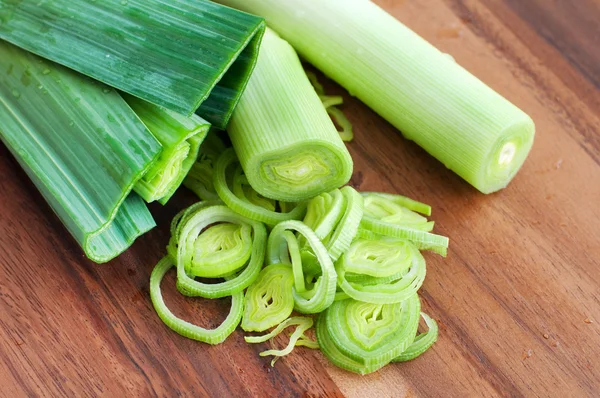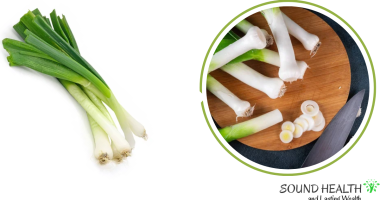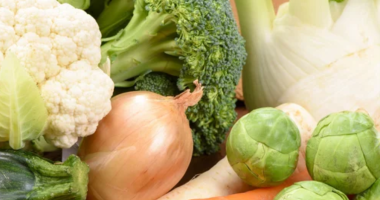What Nutrients Are In Leeks? Leeks, often overshadowed by their close relatives the onion and garlic, are an under-appreciated culinary gem. Beyond their delicate flavor and versatility in dishes, they hold a wealth of valuable nutrients that contribute significantly to a healthy diet. Let’s embark on a journey to uncover the hidden treasures within these humble vegetables.
Vitamin K: A Boon for Bone Health and Blood Clotting
Leeks take center stage when it comes to vitamin K. Just one cup of cooked leeks provides over 100% of the daily recommended intake (RDI), making them a champion for promoting healthy bones and efficient blood clotting. Vitamin K plays a crucial role in activating proteins involved in bone formation and preventing excessive bleeding.
Vitamin A: A Crucial Ally for Vision and Immunity
Next in the spotlight is vitamin A, with leeks offering roughly 30% of the RDI per cup. Vitamin A is essential for maintaining healthy vision, particularly in low-light conditions. It also strengthens the immune system, safeguarding us against infections and illnesses.
Folate: A Vital Nutrient for Pregnant Women and Neural Development
Leeks are a champion of folate, providing around 15% of the RDI per cup. This crucial vitamin is particularly important for pregnant women, as it supports the healthy development of the fetal nervous system. Folate also plays a vital role in red blood cell production, promoting overall health and well-being.
Vitamin C: A Powerful Antioxidant
Not to be forgotten is vitamin C, a potent antioxidant that helps protect our cells from damage. Leeks, with roughly 10% of the RDI per cup, contribute to this vital defense system, supporting our body’s natural resilience against various health challenges.
Manganese: A Multifaceted Mineral
Leeks are a valuable source of manganese, offering about 15% of the RDI per cup. This versatile mineral plays a crucial role in bone health, metabolism, and blood sugar control, ensuring efficient energy utilization and optimal bone density.
Copper: A Key Player in Blood Cell Production and Iron Absorption
With around 10% of the RDI per cup, leeks contribute to our daily copper needs. This essential mineral is vital for red blood cell production, ensuring adequate oxygen delivery throughout the body. Additionally, copper aids in iron absorption, maximizing the utilization of this crucial nutrient for energy production.
Iron: A Crucial Component for Oxygen Transport
Leeks provide about 6% of the RDI for iron per cup, contributing to the formation of healthy red blood cells. Iron is essential for transporting oxygen throughout the body, ensuring our cells receive the vital energy they need to function optimally.
Potassium: A Powerhouse for Blood Pressure Control and Muscle Function
Leeks offer about 8% of the RDI for potassium per cup, making them a valuable dietary source of this essential mineral. Potassium plays a crucial role in regulating blood pressure, maintaining healthy muscle function, and ensuring proper nerve communication.
Fiber: A Champion for Digestive Health
Leeks are a good source of fiber, providing about 2 grams per cup. Fiber supports digestive health by promoting regular bowel movements and maintaining a healthy gut microbiome. Additionally, fiber contributes to feelings of fullness, aiding in weight management and promoting overall health.
Here is a table that summarizes the nutrient content of leeks:
| Nutrient | Amount in 1 cup of cooked leeks | Daily Recommended Intake (RDI) |
|---|---|---|
| Vitamin K | 102 mcg | 90 mcg |
| Vitamin A | 1667 IU | 5000 IU |
| Folate | 52 mcg | 400 mcg |
| Vitamin C | 5 mg | 75 mg |
| Manganese | 0.2 mg | 2.3 mg |
| Copper | 0.1 mg | 0.9 mg |
| Iron | 0.8 mg | 8 mg |
| Potassium | 233 mg | 4700 mg |
| Fiber | 2 g | 25 g |
Beyond the Basics: Unveiling the Hidden Treasures
In addition to these essential nutrients, leeks also harbor a wealth of beneficial compounds, including antioxidants and flavonoids. These powerful molecules help protect our cells from damage and may offer protection against chronic diseases like cancer and heart disease.
In conclusion, leeks are more than just a flavorful addition to our meals. They are a hidden treasure trove of vital vitamins, minerals, and beneficial compounds that contribute significantly to our overall health and well-being. From boosting bone health and supporting vision to strengthening the immune system and promoting digestion, leeks offer a spectrum of benefits that should not be overlooked. So, next time you have the opportunity, incorporate these versatile vegetables into your diet and unlock their hidden nutritional treasures.
ALSO READ: Turnips Health Benefits, Nutrition Facts and Recipes

Leek Uses in the Kitchen
While their nutritional value is undeniable, leeks are also incredibly versatile in the kitchen. Their mild onion-like flavor lends itself beautifully to a wide variety of dishes, adding depth and complexity without overpowering other flavors. Let’s explore some of the diverse culinary applications of leeks:
Soup Sensations:
- Creamy Leek & Potato Soup: This classic comfort food is a perfect way to showcase the delicate sweetness of leeks. The addition of creamy potatoes and herbs creates a velvety smooth and satisfying dish.
- Vichyssoise: This chilled French soup made with leeks, potatoes, and cream is a refreshing and elegant starter or light meal. The smooth texture and subtle flavors are sure to impress your guests.
- Asian-Inspired Broth: Infuse a broth with leeks, ginger, garlic, and soy sauce for a flavorful base for noodle soups, stir-fries, or simply enjoy as a comforting drink.
Sidekicks to Main Dishes:
- Sautéed Leeks: Sautéed with butter or olive oil, leeks become tender and caramelized, offering a savory and slightly sweet side dish to accompany grilled meats, roasted vegetables, or pasta dishes.
- Grilled Leeks: Grilling leeks adds a smoky flavor and enhances their natural sweetness. They can be served whole or sliced and paired with a variety of dips or sauces.
- Stuffed Leeks: For a hearty and flavorful vegetarian option, stuff leeks with a mixture of rice, mushrooms, herbs, and spices. Bake until tender and enjoy a satisfying and nutritious meal.
Flavorful Enhancements:
- Leek Vinaigrette: This versatile dressing adds a subtle oniony flavor to salads, roasted vegetables, or grilled meats. Simply combine chopped leeks with olive oil, vinegar, and your favorite herbs and spices.
- Leeks in Quiches and Frittata: Add chopped leeks to quiches or frittatas for a flavorful and savory addition. Their mild flavor pairs beautifully with eggs, cheese, and other vegetables.
- Potato Leek Pancakes: These savory pancakes are a delicious way to use up leftover mashed potatoes and leeks. They are perfect for breakfast, brunch, or a light snack.
Tips for Selecting and Cooking Leeks
- Choose leeks with firm, white stalks and bright green leaves.
- Trim off the root end and the dark green leaves before using.
- Leeks can be chopped, sliced, or julienned depending on the recipe.
- They can be cooked in various ways, including sautéing, grilling, braising, and steaming.
- Leeks pair well with other vegetables, herbs, and spices.
More Ways to Use Leek
Leeks are not only a culinary delight but also offer surprising benefits beyond the kitchen:
- Natural Dye: The green outer leaves of leeks can be used to create a beautiful natural green dye for wool, yarn, and other fabrics.
- Home Remedies: Leeks have been used in traditional medicine for centuries to treat various ailments, including coughs, colds, and digestive issues.
- Garden Companions: Planting leeks amongst other vegetables can help deter pests and attract beneficial insects.
Conclusion
From their nutritional prowess to their culinary versatility and unexpected applications, leeks are truly a gift from the vegetable kingdom. Embrace their unique flavor and discover the countless ways they can enrich your diet and life. So, next time you encounter these humble vegetables, remember the hidden treasure trove they hold and embrace their power to nourish your body, delight your palate, and inspire your culinary creativity.










